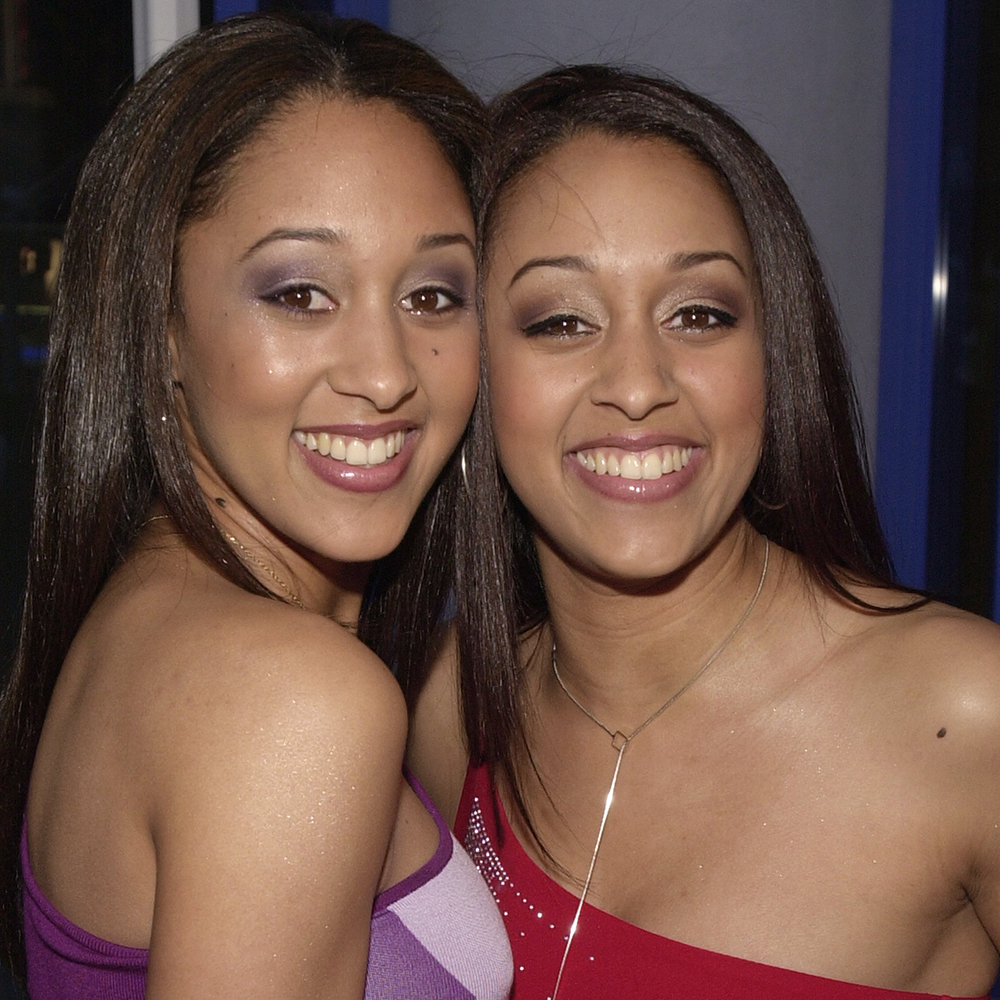

Despite significant advances in gender equality, men and women are still treated differently in what is a major barrier to social justice. Globally, women continue to play a lesser role than men in leadership and business. These gaps lead to pay parities and a lack of power for women in many aspects of their lives, including health care, education, and family life.
24/7 Tempo used the World Economic Forum’s 2020 Global Gender Gap Report to compile a list of the 30 countries with the smallest gender gaps. The report assesses 153 countries and their progress toward gender parity, which is defined as equal access to resources and opportunities regardless of gender. Every country has a score between zero and one; zero means imparity; one means parity achieved.
Globally, the overall gender gap stood at 68.6% in 2020, a slight improvement from the gap of 64% reported in 2006, when the first edition of the report was published.
The fact that Scandinavian countries lead the way in gender equality is not surprising. What some people may find surprising is that the list of 30 countries with the smallest gender gaps includes developing countries such as Rwanda but not the United States, which came in 53rd.
The report is not a ranking of the best places for women to live in. For example, even though Nicaragua ranks fifth, it does not mean women there are overall better off than women in Luxembourg, which ranks 51st. The WEF index measures countries on their progress in closing the gender gap, meaning having the same economic, survival, education, and political opportunities as men in that country.
All geographical regions in the report have achieved at least a 60% gender parity. Western Europe is leading the way with the smallest overall gender gap — 23.3% remains to be closed, which is estimated to happen in about 54 years. North America (27.1%) and Latin America and the Caribbean (27.9%) are second and third.
The disparity in economic and political opportunities for men and women has always been a problem. Women in many countries, especially those with more advanced economies, are relatively well educated but also paid relatively little compared with men — this is how much women are earning in even the best countries for working.
Click here for the 30 countries with the smallest gender gaps.

30. Argentina
>2020 score (0-1): 0.746
>2006 score: 0.683 (41st out of 115)
>Labor force participation score in 2020: 0.716 (102nd out of 153)
>Wage equality for similar work in 2020: 0.566 (112th out of 153)
>Legislators, senior officials and managers in 2020: 0.483 (70th out of 153)
In the 14 years since the first Global Gender Gap Index index was released, Argentina has made considerable improvement, from a score of 0.683 in 2006 to a score of 0.746 in 2020. About 57% of women are actively engaged in the labor force compared with nearly 80% of men, a relative participation ratio of 71.6%. However, while several countries in South America have achieved gender parity when it comes to senior roles, Argentina, along with Peru and Chile, is still less than halfway from that goal. Income disparities among genders remain wide even though Argentina has closed just over 50% of its income gender gap so far. Argentina has reached gender parity in one profession in particular, and that’s Marketing.
[in-text-ad]

29. Belarus
>2020 score (0-1): 0.746
>2006 score: N/A
>Labor force participation score in 2020: 0.929 (23rd out of 115)
>Wage equality for similar work in 2020: N/A
>Legislators, senior officials and managers in 2020: 0.897 (10th out of 153)
One dimension where the gender gap is widest globally is economic participation and opportunity. Only 58% of the gap has been closed so far worldwide, though Belarus is among the 10 best performers with 83.7% of the gap closed as of 2018. The share of women among senior officials is also relatively high with 47% of senior roles held by women. However, Belarus does not rank high in political empowerment. Just over 3% of ministerial positions and a third of seats in parliament are held by women.

28. Barbados
>2020 score (0-1): 0.749
>2006 score: N/A
>Labor force participation score in 2020: 0.933 (21st out of 115)
>Wage equality for similar work in 2020: 0.655 (72nd out of 153)
>Legislators, senior officials and managers in 2020: 0.963 (8th out of 153)
Barbados is the only country in Latin America and the Caribbean region that is close to achieving gender parity in labor force participation — 75% of the women and 80% of men are currently in the labor market. While the island country is performing well in the economic measure of the index, the overall gender gap in Barbados has widened, going from 0.753 in 2018 to 0.749 in 2020.

27. Belgium
>2020 score (0-1): 0.750
>2006 score: 0.708 (20th out of 115)
>Labor force participation score in 2020: 0.871 (56th out of 153)
>Wage equality for similar work in 2020: 0.638 (80th out of 153)
>Legislators, senior officials and managers in 2020: 0.513 (64th out of 153)
Belgium’s place on the list is bolstered by its top scores in the educational attainment area that includes literacy rate and enrollment in primary, secondary, and tertiary education. However, Belgium does not fare as well in economic participation and opportunity. It ranks 80th in wage equality for similar work out of 153 nations surveyed, 64th in the gender gap of senior legislative officials and managers, and the nation has not had a female head of state over the last 50 years.
[in-text-ad-2]

26. Estonia
>2020 score (0-1): 0.751
>2006 score: 0.694 (29th out of 115)
>Labor force participation score in 2020: 0.913 (32nd out of 153)
>Wage equality for similar work in 2020: 0.713 (36th out of 153)
>Legislators, senior officials and managers in 2020: 0.564 (50th out of 153)
The small Baltic nation improved its World Economic Forum gender parity ranking by three positions in 2020, compared to 2006 rising to No. 26. Estonia scores well in educational attainment, receiving top scores in literacy rate and enrollment in primary, secondary, and tertiary education. Nearly a similar percentage of men and women in Estonia work, and the country ranks 36th in the world in wage equality for similar work. The country ranks 37th in political empowerment for women out of 153 nations, including a 23rd placement for women in ministerial positions.
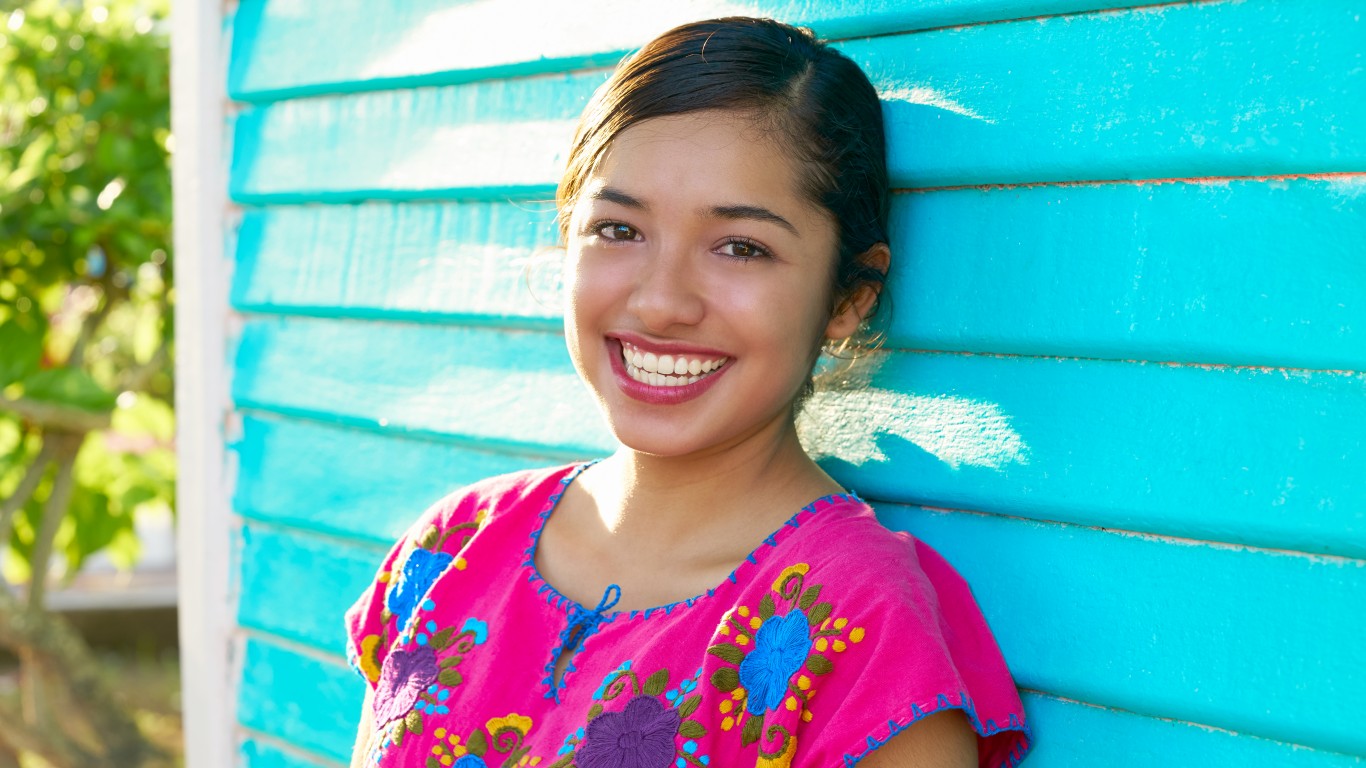
25. Mexico
>2020 score (0-1): 0.754
>2006 score: 0.646 (75th out of 115)
>Labor force participation score in 2020: 0.570 (128th out of 153)
>Wage equality for similar work in 2020: 0.503 (129th out of 153)
>Legislators, senior officials and managers in 2020: 0.565 (48th out of 153)
Mexico is one of the five most improved countries worldwide on the list in 2020, with all five nations narrowing gender parity gaps by 3.4 percentage points or more. Like the other improved nations, Mexico reported an increase in women’s presence in political institutions. The number of women in ministerial positions leaped to 42.1% from 15.8% in 2018, and women represent more than 48% of seats in parliament. Mexico has also virtually closed educational attainment and health and survival disparities, according to the WEF. Where Mexico needs improvement is in labor force participation — only 47% of Mexican women participate in the labor market compared to 82% of men.
[in-text-ad]
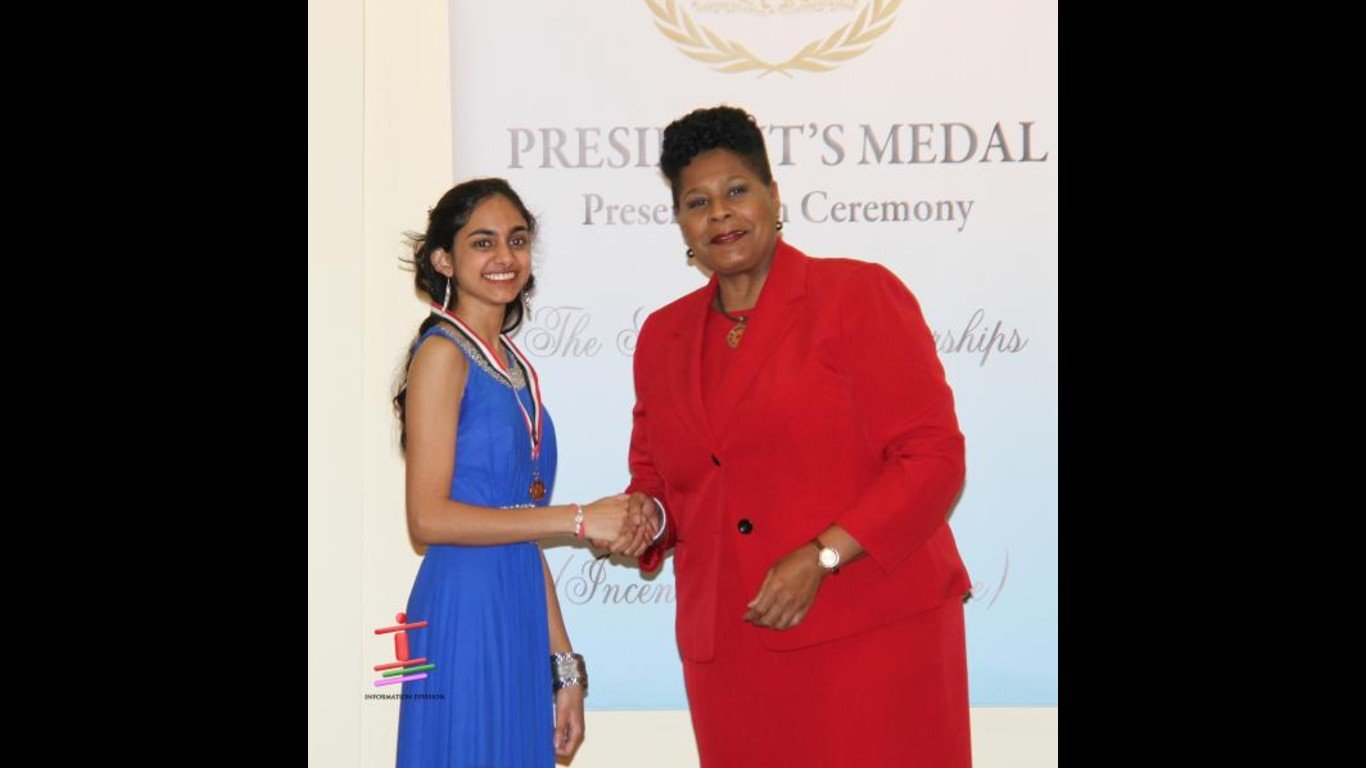
24. Trinidad and Tobago
>2020 score (0-1): 0.756
>2006 score: 0.6800 (45th out of 115)
>Labor force participation score in 2020: 0.733 (100th out of 153)
>Wage equality for similar work in 2020: 0.62 (88th out of 153)
>Legislators, senior officials and managers in 2020: 0.802 (13th out of 153)
Trinidad and Tobago ranks first in parity among professional and technical workers, with more women working in the field than men, a gap of 17 percentage points. The Caribbean country ranks first in enrollment in second and tertiary education, as well as first in health and survival. Trinidad and Tobago ranks 31st in political empowerment. The country has had one female head of state in the last 50 years, Kamla Persad-Bissessar, who served as prime minister from 2010 to 2015.

23. Moldova
>2020 score (0-1): 0.757
>2006 score: 0.713 (17th out of 115)
>Labor force participation score in 2020: 0.903 (35th out of 153)
>Wage equality for similar work in 2020: 0.71 (39th out of 153)
>Legislators, senior officials and managers in 2020: 0.680 (23rd out of 153)
The Eastern European nation of Moldova slipped six spots in the 2020 WEF gender parity list from 2006. Its gender gap score improved, but only slightly. Moldova’s ranking tumbled in the areas of economic participation and opportunity (to 19th from second) and educational attainment (to 61st from 37th). Political empowerment rose for women in Moldova, with the nation’s ranking rising to 45th from 50th. Moldova ranks 22nd in women in ministerial positions. The country has a score of 1.000 in terms of professional and technical workers, with more than 65% of such workers female.

22. Colombia
>2020 score (0-1): 0.758
>2006 score: 0.705 (22nd out of 115)
>Labor force participation score in 2020: 0.742 (97th out of 153)
>Wage equality for similar work in 2020: 0.535 (122nd out of 153)
>Legislators, senior officials and managers in 2020: 1.000 (1st out of 153)
The gender parity gap in political empowerment is narrowing in Colombia, a major reason the South American nation ranks 22nd on the WEF list. Women in ministerial positions have a nearly 6 percentage point advantage over their male counterparts, although less than 19% of parliament seats are held by women. Other areas where the country scores 1.000, or no gender gap, include parity in senior officials and managers, professional and technical workers, and the educational attainment categories of literacy rate and enrollment in primary, secondary, and tertiary education.
[in-text-ad-2]

21. United Kingdom
>2020 score (0-1): 0.767
>2006 score: 0.736 (9th out of 115)
>Labor force participation score in 2020: 0.886 (49th out of 153)
>Wage equality for similar work in 2020: 0.642 (76th out of 153)
>Legislators, senior officials and managers in 2020: 0.569 (47th out of 153)
The United Kingdom has fallen out of the top 10 in WEF’s gender parity list in the 2020 listing. It dropped six places since the 2018 ranking. The U.K. declined in ranking in all the major categories from 2006: Economic participation and opportunity (38th from first), political empowerment (20th from 12th), economic participation and opportunity (58th from 37th), and health and survival (112th from 63rd). There is a 10 percentage point gap in the labor participation rate between men and women in the U.K.

20. Albania
>2020 score (0-1): 0.769
>2006 score: 0.661 (61st out of 115)
>Labor force participation score in 2020: 0.747 (94th out of 153)
>Wage equality for similar work in 2020: 0.823 (3rd out of 153)
>Legislators, senior officials and managers in 2020: 0.469 (76th out of 153)
Albania is one of the most improved countries in the overall index. A major reason for the higher score is a significant increase in women’s presence in politics. Compared with other countries in the WEF report, Albania has significantly closed its wage gap for similar work with a score of 0.82, third highest in the world. However, Albania has closed only 37.6% of its political empowerment gap, although this is the most in the Eastern Europe and Central Asia.
[in-text-ad]

19. Canada
>2020 score (0-1): 0.772
>2006 score: 0.716 (14th out of 115)
>Labor force participation score in 2020: 0.917 (29th out of 153)
>Wage equality for similar work in 2020: 0.695 (49th out of 153)
>Legislators, senior officials and managers in 2020: 0.551 (55th out of 153)
Canada made history in 2015, when it achieved gender parity in one aspect of political empowerment — the prime minister appointed women to half of its cabinet’s post. But the country has made modest improvements across other gender parity indicators. The country’s wage equality gap has remained virtually the same since last year; the gender gap in senior officials and managers is exactly the same; and the estimated income gap has slightly improved. In 2018, women earned about $38,000 compared to men whose income was almost $56,000. In 2020, those numbers were $36,000 and $53,000, respectively.
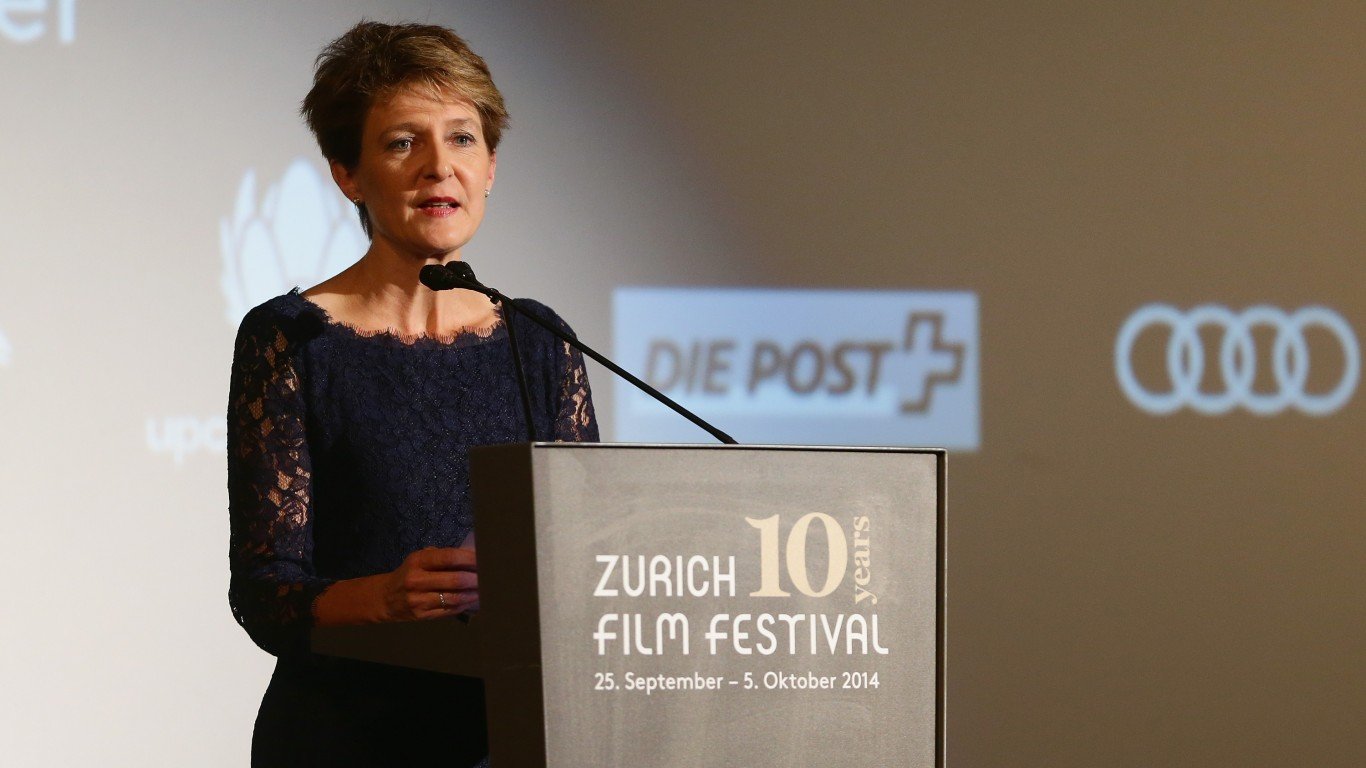
18. Switzerland
>2020 score (0-1): 0.779
>2006 score: 0.700 (26th out of 115)
>Labor force participation score in 2020: 0.899 (37th out of 153)
>Wage equality for similar work in 2020: 0.707 (40th out of 153)
>Legislators, senior officials and managers in 2020: 0.526 (58th out of 153)
Switzerland has been among the countries with the smallest gender gap at least since the first edition of the WEF report in 2006. Since then, however, the Central European nation has made little further progress in achieving parity. The only score that has significantly improved is political empowerment. It went from 0.154 in 2006 to 0.407 as, particularly, 43% of ministerial positions are held by women. Additionally, the president of Switzerland, who is both the head of state and head of government is a woman. Simonetta Sommaruga assumed office on Jan. 1, 2020. She was president in 2015 as well.

17. South Africa
>2020 score (0-1): 0.780
>2006 score: 0.713 (18th out of 115)
>Labor force participation score in 2020: 0.809 (82nd out of 153)
>Wage equality for similar work in 2020: 0.537 (121st out of 153)
>Legislators, senior officials and managers in 2020: 0.438 (84th out of 153)
Not many women hold senior officials and political leaders roles in Sub-Saharan Africa. South Africa is one of two top performers in the region and the 10th best performer among all countries, having closed at least 49% of the political empowerment gender gaps to date. Similarly in the region, women hold no more than 18% of ministerial positions, but South Africa is an exception, with more than 48% of women holding such positions, translating to a score of 0.946. Of all measures used to calculate the gender gap score of South Africa, the score of wage equality for similar work is the lowest at 0.537, ranking the country 121st in the world.
[in-text-ad-2]

16. Philippines
>2020 score (0-1): 0.781
>2006 score: 0.752 (6th out of 115)
>Labor force participation score in 2020: 0.626 (121st out of 153)
>Wage equality for similar work in 2020: 0.812 (5th out of 153)
>Legislators, senior officials and managers in 2020: 1.000 (1st out of 153)
The East Asia and the Pacific region has closed 68.5% of the overall gender gap. But the Philippines, a top performer in the region, has closed 78% of the gap. The country ranked in the top 10 on the 2018 Global Gender Gap Index, but it fell in ranking after a decline of 1.8 percentage points in its score. The Philippines has the smallest gender gap of any Asian country by far. The second best is Lao PDR, which ranks 43rd. The Philippines’ wage equality gap is the fifth smallest in the world. Full parity has been achieved in the senior officials and managers as well as professional workers subindexes. However, significantly fewer women are active in the labor force â 48% of the female population compared to 76.2% males.

15. France
>2020 score (0-1): 0.781
>2006 score: 0.652 (70th out of 115)
>Labor force participation score in 2020: 0.891 (45th out of 153)
>Wage equality for similar work in 2020: 0.528 (127th out of 153)
>Legislators, senior officials and managers in 2020: 0.526 (59th out of 153)
France has made some progress in 2020, with its gender gap score increasing since 2018 but not enough to improve the country’s ranking. In fact, France’s ranking dropped three slots compared with last year’s WEF report. The wage equality gap is only 52% closed, ranking 127th out of the 153 nations included in the assessment. Still, though a gap exists in labor force participation, it is relatively small with 67.5% of the female population working compared with 75.8% of males. France performs well in one economic subindex — there are slightly more women than men employed as professional and technical workers. However, only a third of senior posts and managers are occupied by women.
[in-text-ad]

14. Denmark
>2020 score (0-1): 0.782
>2006 score: 0.746 (8th out of 115)
>Labor force participation score in 2020: 0.935 (19th out of 153)
>Wage equality for similar work in 2020: 0.693 (52nd out of 153)
>Legislators, senior officials and managers in 2020: 0.364 (102nd out of 153)
Denmark has made significant improvements in closing the gender gap in political empowerment. The current head of state is a woman. Elected in June 2019, Mette Frederiksen, 41, is Denmark’s youngest prime minister ever. The country is also closer to closing the gap in labor force participation — over 76% of women work, compared with 81% of men. Both men and women are able to work outside the home and pursue careers because of government-supported daycare and generous parental leave of 224 days, which can be split between the parents any way they see fit. The educational attainment gap has been fully closed at least since 2006, when the WEF report first came out.
13. Costa Rica
>2020 score (0-1): 0.782
>2006 score: 0.694 (30th out of 115)
>Labor force participation score in 2020: 0.637 (118th out of 153)
>Wage equality for similar work in 2020: 0.573 (111th out of 153)
>Legislators, senior officials and managers in 2020: 0.513 (66th out of 153)
Political empowerment gaps are large in many countries in Latin America and the Caribbean, but Costa Rica has made significant progress over the last year â in 2018, the country elected a six-person legislative directorate, with five women in the leadership roles — joining the group of countries that have closed at least 54% of the gap on this subindex. Moreover, slightly more than half of ministers in the country in 2019 were women. While the political empowerment gap in Costa Rica is closing, the economic opportunities one has barely moved since 2006. Just over 55% of the income and wage gaps have been closed. The gender gap in senior positions is even wider, with only a third of such positions held by women.
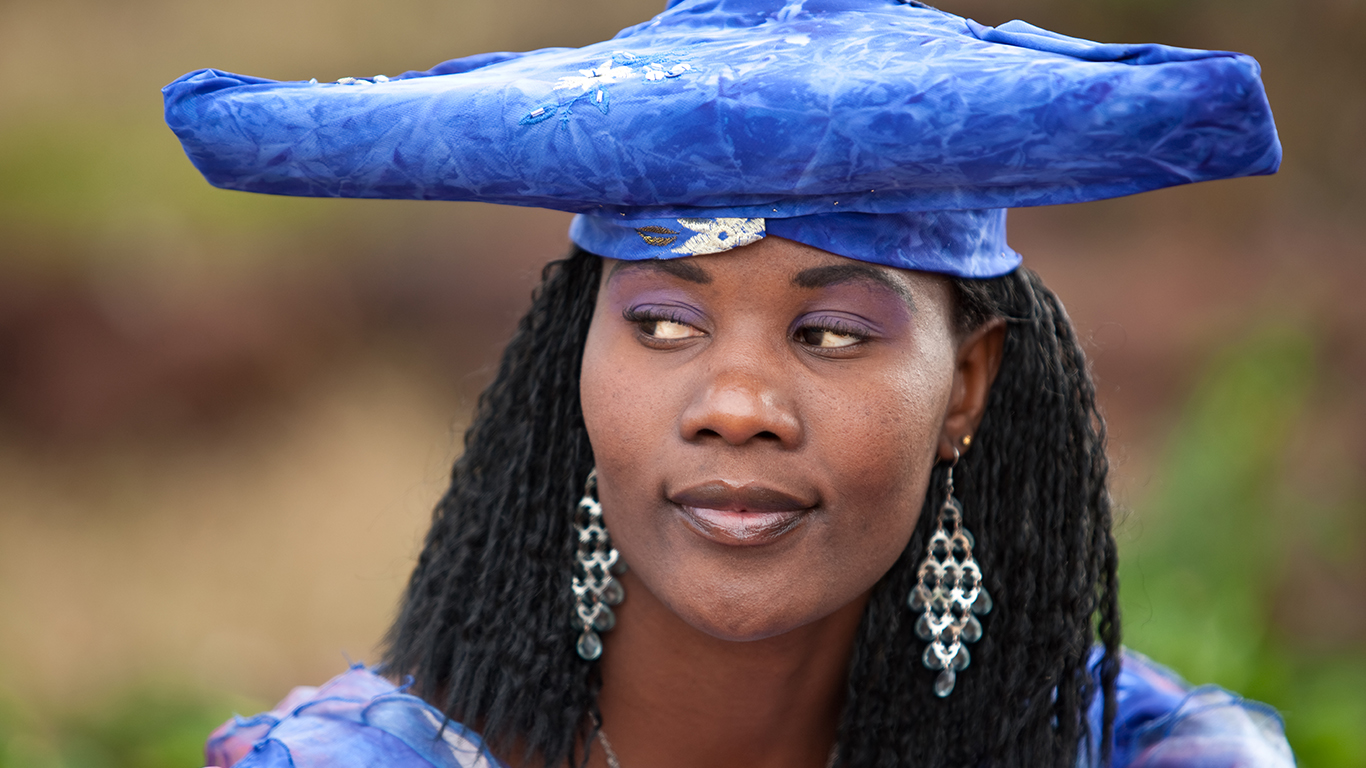
12. Namibia
>2020 score (0-1): 0.784
>2006 score: 0.686 (38th out of 115)
>Labor force participation score in 2020: 0.871 (55th out of 153)
>Wage equality for similar work in 2020: 0.662 (69th out of 153)
>Legislators, senior officials and managers in 2020: 0.772 (15th out of 153)
Namibia has made significant improvements in every aspect of the global gender gap index since 2006, when the country ranked 38th out of 115 countries. Namibia has achieved parity in the education subindex, with 91% of both men and women getting a secondary education; in life expectancy; and in the professional and technical workers measure. In fact, there are more female skilled workers than male. The country is also reducing its labor force participation gap with 87% of it being closed in 2020, but there are still economic disparities between men and women. Women are paid significantly less for similar work — that gap is only 66% closed. There are only two measures Namibia is performing worse in, and they are both part of the political empowerment index. Only a fifth of ministerial positions are held by women, and a woman has been head of state for four years of the last 50.
[in-text-ad-2]
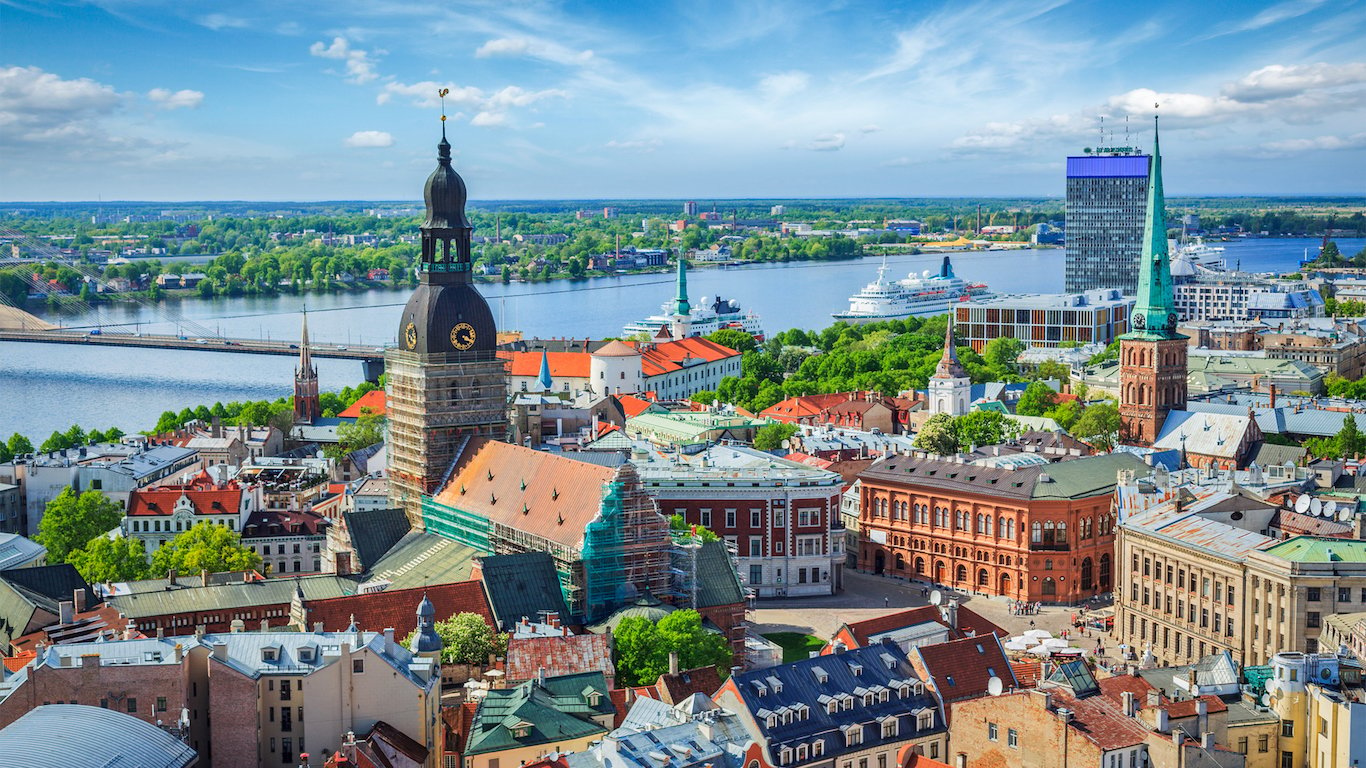
11. Latvia
>2020 score (0-1): 0.785
>2006 score: 0.709 (19th out of 115)
>Labor force participation score in 2020: 0.934 (20th out of 153)
>Wage equality for similar work in 2020: 0.717 (34th out of 153)
>Legislators, senior officials and managers in 2020: 0.721 (31st out of 153)
Latvia has significantly improved its gender parity score as well as its ranking since 2006, moving from 19th to 11th place in 2020. Today, nearly 75% of women in Latvia are in the labor market, while 80% of men are. The share of women among senior officials is relatively high, too — about 45% of senior roles are filled by women. The biggest improvement in ranking since 2006 has been made in the educational attainment subindex. The country was ranked 85th in 2006 and ranks first in the latest WEF report.

10. Germany
>2020 score (0-1): 0.787
>2006 score: 0.752 (5th out of 115)
>Labor force participation score in 2020: 0.898 (38th out of 153)
>Wage equality for similar work in 2020: 0.671 (68th out of 153)
>Legislators, senior officials and managers in 2020: 0.416 (89th out of 153)
Germany has not been in the top 10 in the WEF gender gap index for more than a decade, until 2020. The country’s 2020 rank — the result of closing 78.7% of the gender gap — is largely due to more women in politics. About 40% of ministers and a third of seats in parliament are held by women. The fact that Germany has had a female head of state for the last 15 years also helps Germany’s high ranking in the political empowerment category. Gender gaps in other areas of the index remain practically unchanged. More men get a secondary education as well as economic opportunities. The economic participation and opportunity gender gap is only 72.3% closed. The wage gap is only about 67% closed, and less than a third of managers and board members of listed companies are women.
[in-text-ad]
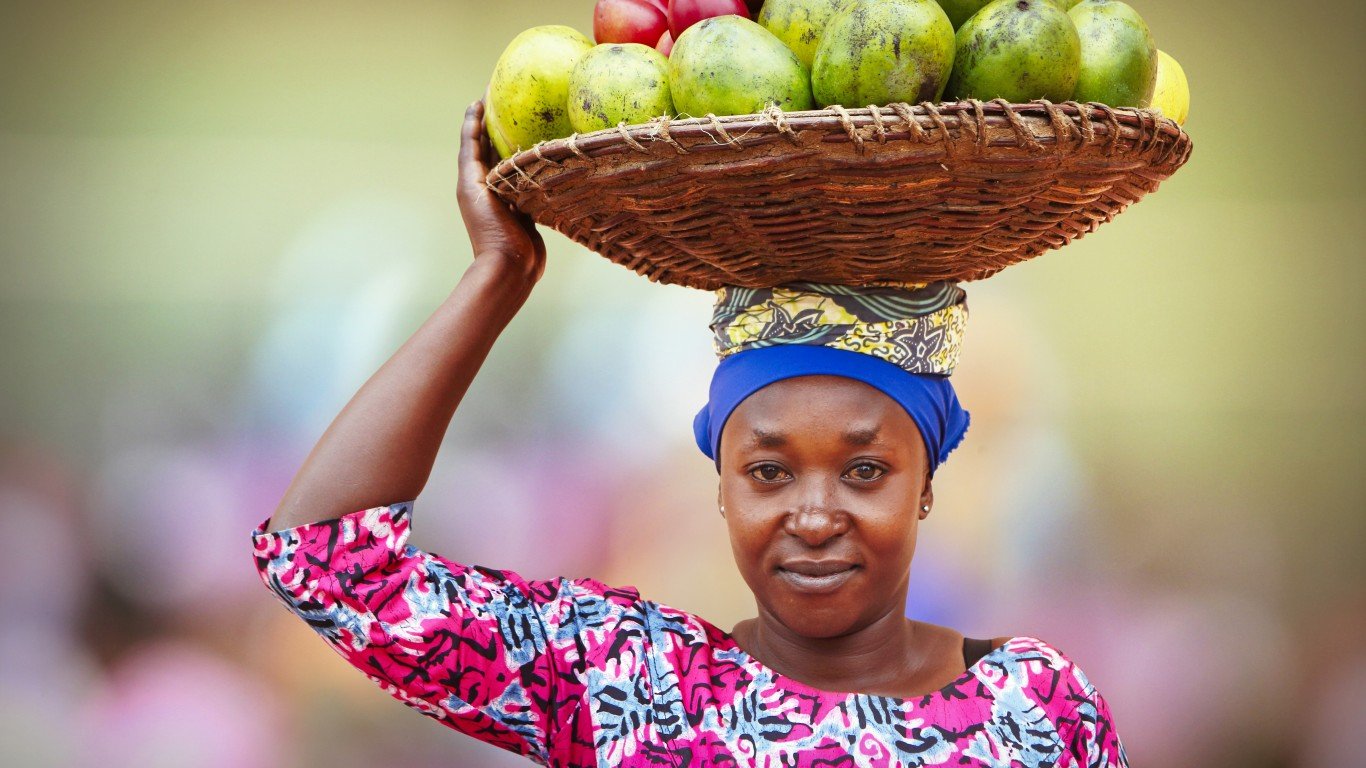
9. Rwanda
>2020 score (0-1): 0.791
>2006 score: N/A
>Labor force participation score in 2020: 1.000 (1st out of 153)
>Wage equality for similar work in 2020: 0.763 (13th out of 153)
>Legislators, senior officials and managers in 2020: 0.164 (135th out of 153)
Rwanda is the only country from Sub-Saharan Africa ranking in the top 10 countries for gender parity, even though it was ranked sixth in the 2018 edition of the WEF gender gap index. The country has so far closed 79.1% of its gender gap. The country is the only country with a 50% share of women in parliament in the region. About half of the ministers in the country are women, too. Rwanda has closed its health and survival gap and is very close to achieving gender parity in education. The country still has a large gap to close in economic participation and opportunity — about 67% have been closed. Though just about an equal share of the female and male population work, women are paid significantly less. About 40% of the wage gap remains to be closed. Few women are employed in technical professions, and an even fewer are in senior positions.

8. Spain
>2020 score (0-1): 0.795
>2006 score: 0.732 (11th out of 115)
>Labor force participation score in 2020: 0.872 (54th out of 153)
>Wage equality for similar work in 2020: 0.558 (115th out of 153)
>Legislators, senior officials and managers in 2020: 0.473 (73rd out of 153)
Spain is among the most improved countries in 2020 in the WEF gender parity index, going from 29th in 2018 to eighth in 2020. There has been progress in all measures included in the overall gender gap index, except in health and survival, where the gap has already been almost completely closed for years. The most significant improvement was in political empowerment, where the country advanced 17 percentage points over the last few years, closing 52.7% of the gap — though Spain is yet to have a female head of state. Gender parity in Spain improved in the workplace, albeit slightly. Though all aspects of economic participation have improved, the gender gaps in wages, incomes, managerial positions, and board members remain relatively large.

7. Ireland
>2020 score (0-1): 0.798
>2006 score: 0.733 (10th out of 115)
>Labor force participation score in 2020: 0.845 (65th out of 153)
>Wage equality for similar work in 2020: 0.686 (56th out of 153)
>Legislators, senior officials and managers in 2020: 0.563 (51st out of 153)
Ireland has made many improvements since 2018 and moved up two places in the global gender gap ranking. The country has closed 79.8% of its gender gap. In particular, it almost completely closed the gap in getting secondary education. Ireland has been reducing its gender gap in the economic participation and opportunity category continuously since 2016, closing 73.2% of this gap. The country’s most significant progress over the last year was more women holding senior positions, now standing at 36% from 34% in 2018. There has also been progress in the estimated earned income subindex, where 34.1% of the gap has yet to be closed.
[in-text-ad-2]
6. New Zealand
>2020 score (0-1): 0.799
>2006 score: 0.751 (7th out of 115)
>Labor force participation score in 2020: 0.890 (46th out of 153)
>Wage equality for similar work in 2020: 0.71 (38th out of 153)
>Legislators, senior officials and managers in 2020: 0.665 (26th out of 153)
New Zealand is the one country from the East Asia and the Pacific region in the top 10 with an overall score of 79.9%, way ahead of the second-ranked country in the region — the Philippines, which ranks 16th globally with a score of 0.781. New Zealand ranks one position higher than in 2018, even though its overall gender gap is almost unchanged. A woman was head of state in the country during 12.6 of the past 50 years, making New Zealand among the countries where women are strongly represented in institutions. Women in New Zealand were among the first to win suffrage, back in 1893. But the gender gap in the economic opportunity category is relatively high at 11%. More than 76% of women are working or looking for a job, much lower than the share of men, at 85.8%. These two measures are where New Zealand performs the worst.
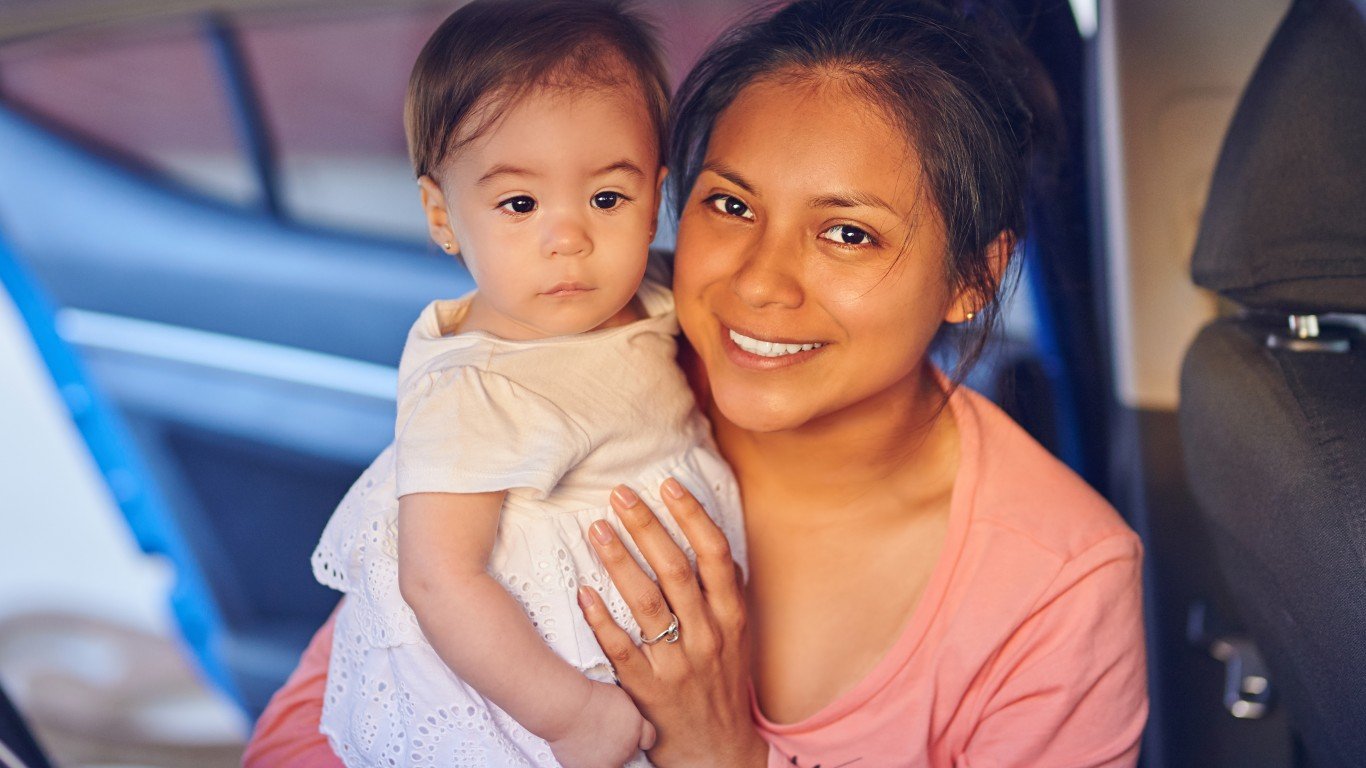
5. Nicaragua
>2020 score (0-1): 0.804
>2006 score: 0.657 (62nd out of 115)
>Labor force participation score in 2020: 0.627 (120th out of 153)
>Wage equality for similar work in 2020: 0.560 (113th out of 153)
>Legislators, senior officials and managers in 2020: 0.543 (57th out of 153)
Nicaragua is the only Latin country among the 10 nations with the smallest gender gaps, having closed just over 80% of its gender gap, the fifth best performance in the world in 2020. Gender income disparities remain wide in the region, and Nicaragua is the best performer — it has yet to close over 22% of its gap. Nicaragua has the third lowest political empowerment gender gap in the world with about 57% of the gap already closed. The country is known for having female political leaders. There are more women in ministerial positions than men. However, the country’s economic participation and opportunity score is low by international comparison, with only 67.1% of it being closed, ranking 81st.
[in-text-ad]

4. Sweden
>2020 score (0-1): 0.820
>2006 score: 0.813 (1st out of 115)
>Labor force participation score in 2020: 0.955 (14th out of 153)
>Wage equality for similar work in 2020: 0.694 (50th out of 153)
>Legislators, senior officials and managers in 2020: 0.628 (35th out of 153)
Although Sweden dropped one place in the overall gender gap ranking since 2018, the country is still among those where the gender gap is smallest — about 82% closed. The economic participation and opportunity measure of the index is slightly worse than in 2018 due to very little improvement in the wage gender gap — now standing at almost 77% — and the number of women in the labor force — about 81% of women are working, compared with almost 85% of men. Sweden has the highest share of women graduates from STEM programs among Nordic countries.

3. Finland
>2020 score (0-1): 0.832
>2006 score: 0.796 (3rd out of 115)
>Labor force participation score in 2020: 0.959 (13th out of 153)
>Wage equality for similar work in 2020: 0.798 (9th out of 153)
>Legislators, senior officials and managers in 2020: 0.467 (77th out of 153)
Finland keeps improving when it comes to gender equality. The Nordic country moved up in the ranking by one place since last year after it narrowed its overall gender gap by 1 percentage point to 83.2%. The higher ranking in 2020 is due to Finland’s narrower political empowerment gap. The share of women in parliament increased to 47% from 42% in 2019, offsetting a small decrease in the share of women in ministerial positions. Finland slightly reduced its economic participation and opportunity gender gap by 2 percentage points from last year. While there are more women in senior roles, that dimension of the index still has a relatively large gender gap level — 46.7%.

2. Norway
>2020 score (0-1): 0.842
>2006 score: 0.799 (2nd out of 115)
>Labor force participation score in 2020: 0.949 (16th out of 153)
>Wage equality for similar work in 2020: 0.745 (19th out of 153)
>Legislators, senior officials and managers in 2020: 0.553 (54th out of 153)
By 2020, Norway has closed 84.2% of its overall gender gap, almost 1 percentage point more than in 2019. As in many countries at the top of the list, Norway has completely closed its educational attainment and health and survival gaps. The economic participation gap is 79.8% closed, 11th highest. The opportunity and political empowerment gap is 59.8% closed, the second highest, even though women still comprise less than half of both parliamentarians (40.8%) and ministers (42%). The gender gap is almost closed when it comes to labor force participation, as 75.2% of women are working (compared with 79.2% of men), even though women are much less likely to be in managerial positions. There are, however, more women than men among professional and technical workers.
[in-text-ad-2]
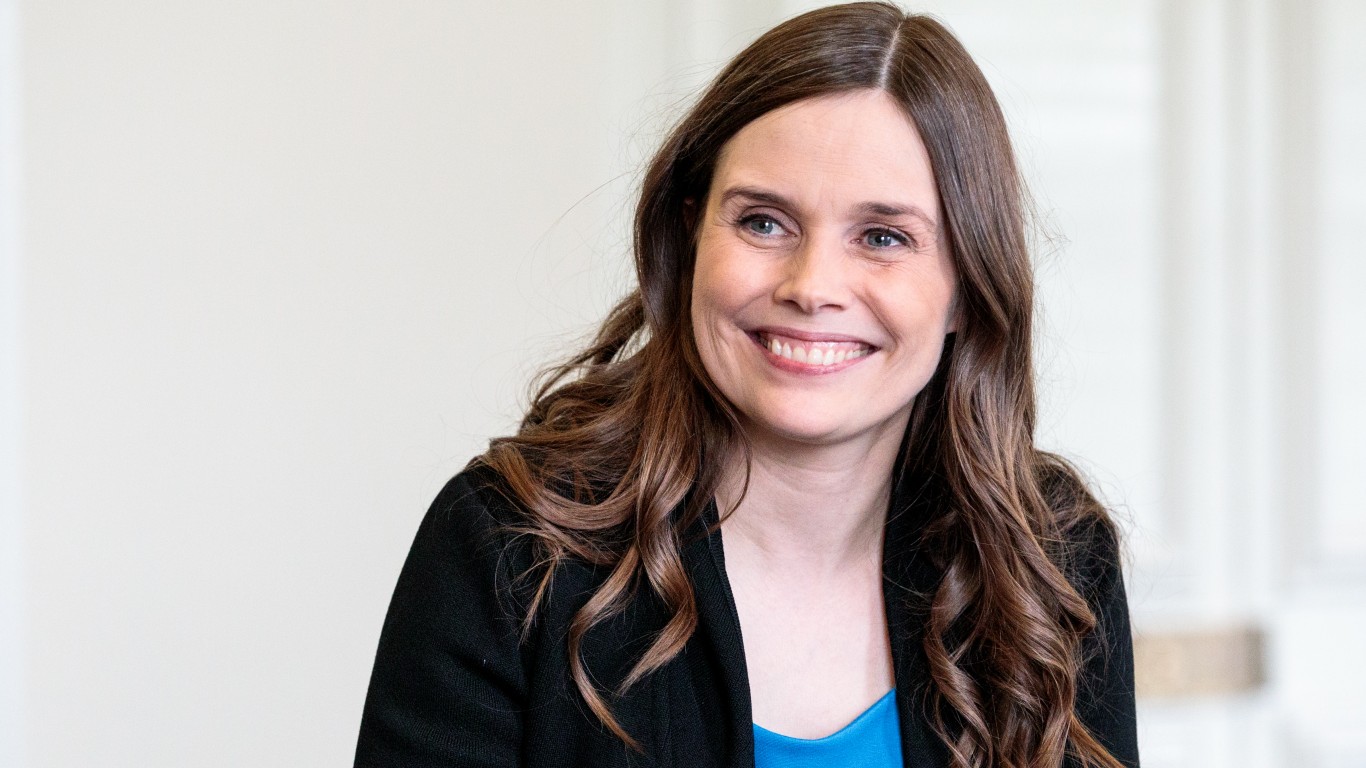
1. Iceland
>2020 score (0-1): 0.877
>2006 score: 0.781 (4th out of 115)
>Labor force participation score in 2020: 0.945 (17th out of 153)
>Wage equality for similar work in 2020: 0.846 (1st out of 153)
>Legislators, senior officials and managers in 2020: 0.708 (21st out of 153)
Iceland, again, ranks at the top of the WEF gender parity index, the 11th time in a row. The country has closed 88% of its gender gap so far. Iceland leads the political empowerment category, having closed about 70% of the gap. The presence of women in parliament, ministerial positions, and acting as heads of states is the most widespread compared with all other countries assessed by the index. Iceland’s score is almost four times higher than the global average. The country has the second-best performance on economic participation and opportunity subindex. About 85.8% of women are in the labor market, and they often occupy senior and managerial roles. About 43% of the companies’ board members are women.
Take This Retirement Quiz To Get Matched With A Financial Advisor (Sponsored)
Take the quiz below to get matched with a financial advisor today.
Each advisor has been vetted by SmartAsset and is held to a fiduciary standard to act in your best interests.
Here’s how it works:
1. Answer SmartAsset advisor match quiz
2. Review your pre-screened matches at your leisure. Check out the
advisors’ profiles.
3. Speak with advisors at no cost to you. Have an introductory call on the phone or introduction in person and choose whom to work with in the future
Take the retirement quiz right here.
Thank you for reading! Have some feedback for us?
Contact the 24/7 Wall St. editorial team.
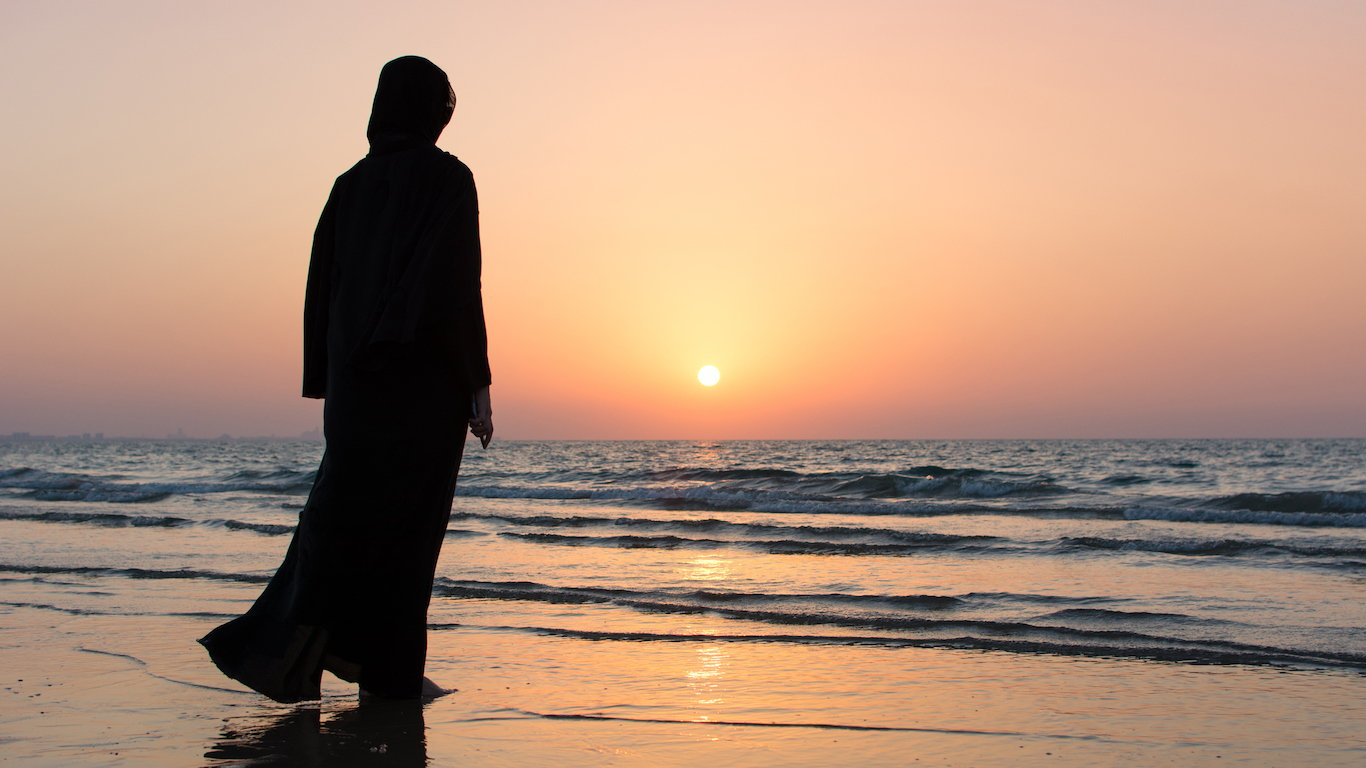 24/7 Wall St.
24/7 Wall St. 24/7 Wall St.
24/7 Wall St.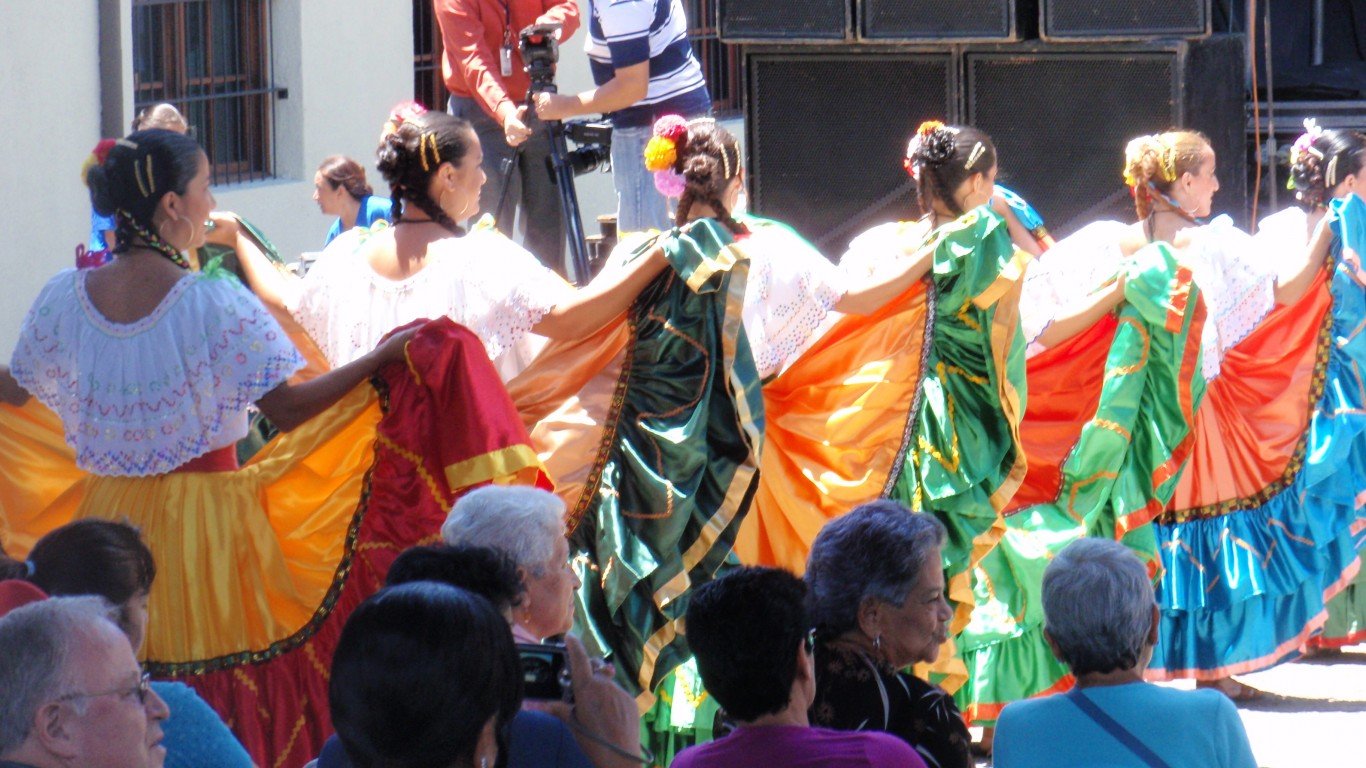
 24/7 Wall St.
24/7 Wall St.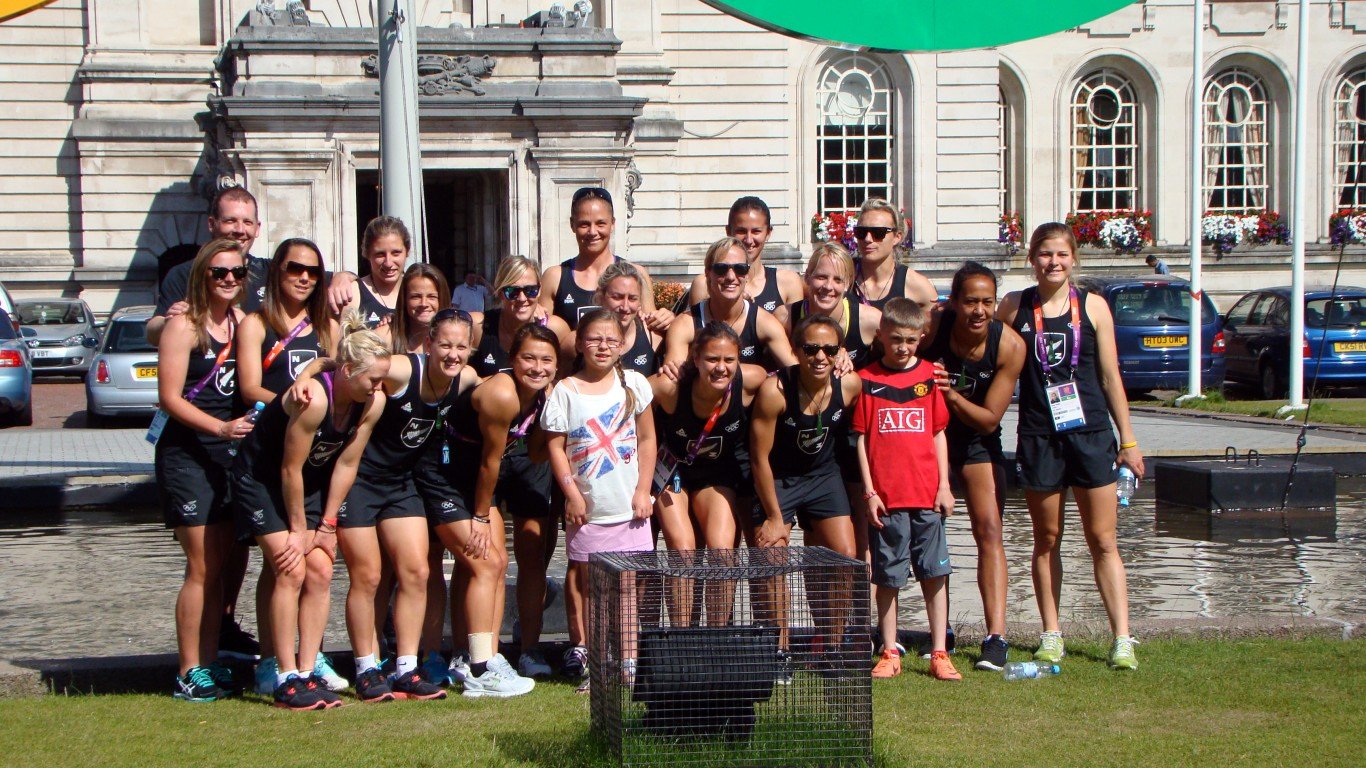
 24/7 Wall St.
24/7 Wall St.


